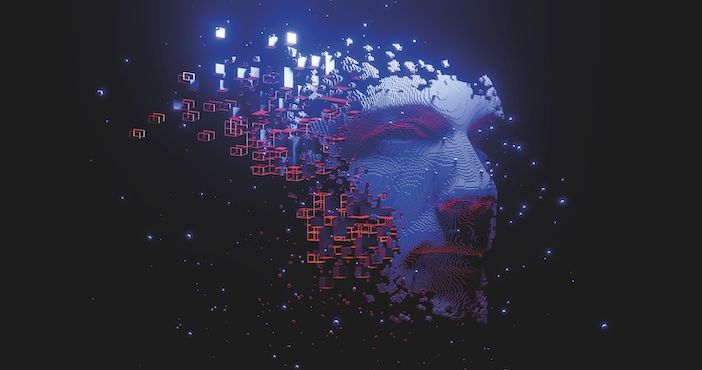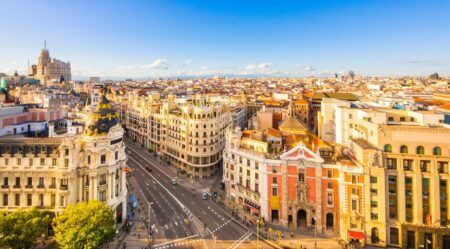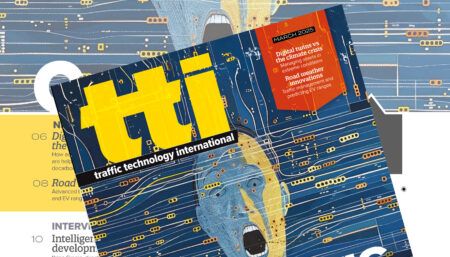Lidar (light detection and ranging) technology, which turns invisible lasers into accurate maps of the world, is finding an increasing number of applications in traffic management. Trinity Francis speaks to some of the vendors and academic experts plotting a new path to a more clearly defined future
Lidar is not a new invention but as the technology has evolved it’s being used in an increasing number of traffic management applications. Progressing beyond asset management, lidar is offering solutions for more complex road management scenarios. Whilst lidar can be used in isolation, its implementation with other sensors and technologies unlocks further opportunities for traffic management.
Lidar allows for precise depth perception which can enhance the capabilities and accuracy of a multi-sensor solution.
“If you think about your senses, cameras are like your eyes, radar and ultrasound are like your ears and lidar is a more like the sense of touch,” says Mitch Hourtienne chief commercial officer at lidar manufacturer, Cepton.
“Lidar can monitor the different roads at an intersection… as well as how many pedestrians are crossing”
Federico Vincenzi, CEO, Comark
In order to understand the data gathered from lidar hardware, sophisticated software is required to classify vehicles and vulnerable road users (VRUs) such as pedestrians and cyclists. Professor Taylor Li at the University of Texas Arlington says perception software is the secret to the ultimate success and wider roll out of lidar technology: “Lidar has a very high ceiling in terms of raw data, even though there are some imperfections now, there is room to improve.”
To better interpret this data, researchers and lidar hardware providers have been developing advanced algorithms and artificial intelligence (AI) programs. This means lidar can be used for more complicated tasks like intersection management.
“Lidar can monitor the different roads joining an intersection, how many vehicles are waiting, how many are going straight and how many are turning. As well as how many pedestrians are waiting and crossing and so on,” says Federico Vincenzi, CEO of Italian traffic monitoring and parking systems specialist Comark, which offers laser scanners as part of its solutions portfolio. The data gathered from lidar sensors can be used to inform signal timings to optimize traffic flow and help to reduce crashes.
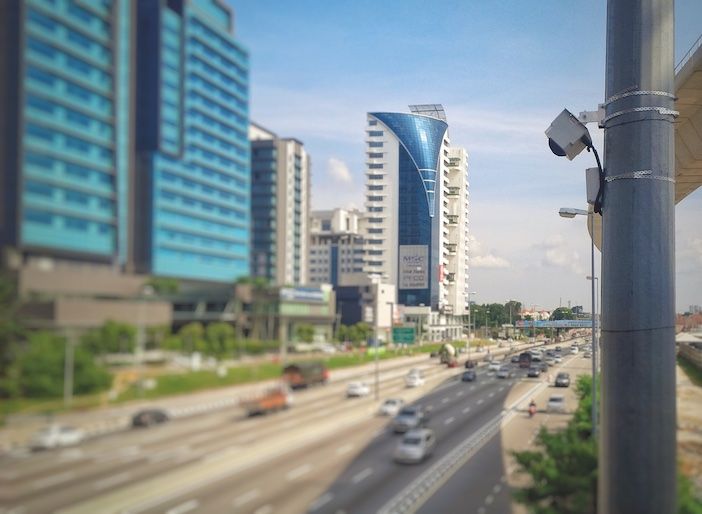
From 2D to 3D
The most common lidar hardware are 2D sensors which cover a specific section of road, with limited field of view. More recently, companies such as Comark have started using 3D sensors which can capture a 360-degree view from a single scanner. However, this cutting-edge technology is currently far more expensive than 2D sensors.
To achieve a similar result to a 3D sensor without the high expense, Zeina Nazer, cofounder of Cities Forum suggests that, “It is better to have multiple lidar looking at different corners and working together rather than one lidar that is collecting a lot of information and is very expensive.” This was concluded during her research work at the Faculty of Engineering and Physical Sciences at University of Southampton.
“Lidar can count persons in the car for high occupancy tolls”
Zeina Nazer, cofounder, Cities Forum
Nazer notes that economies of scale will allow the cost of lidar technology to come down with wider use of lidar by automotive manufacturers. “The price of lidar technology is decreasing very quickly because it’s starting to be used in autonomous driving applications,” agrees Vincenzi. Although mass production of lidar sensors will make hardware cheaper, Li argues the equipment for infrastructure applications needs to be more robust than sensors used in cars.
As hardware installed outside is constantly exposed to the elements, the sensors must be able to withstand adverse weather conditions and remain operational around the clock. Whilst the physical sensor experiences extreme heat, cold and wet conditions, its accompanying perception software needs to be able to understand rain and fog. Vincenzi says artificial intelligence can be used to filter out environmental noise.
Current lidar ITS
Machine learning and deep learning is also used to analyze vehicle profiles for vehicle classification in free-flow tolling scenarios. The technology allows for superior vehicle detection over other sensor types. “Operators can charge by the number of axles and the size of the vehicle,” says Hourtienne. “You can use lidar to spot the license plate and then aim the camera there to read it. Also, it’s much less intrusive than tearing up the ground to install an inductive loop below the pavement.”
As well as vehicle classification, Nazer notes: “Lidar can count persons in the car for high occupancy tolls.” Detection is not blocked by glass or transparent surfaces so lidar can be used to see into the vehicle. It also has an advantage over video-based detection systems as it maintains privacy because its point clouds cannot render identifying features, even as it becomes higher resolution, “I don’t think you’ll ever be able to discern individuals, but you may be able to tell things like gender or rough age groups,” says Hourtienne. “Where you’re trying to detect if there is a child in the crosswalk or an adult, that could help the computer predict if the human is going to understand the situation and do the right thing.”
“Lidar has a very high ceiling in terms of raw data, even though there are some imperfections now, there is room to improve”
Professor Taylor Li, University of Texas Arlington
Regardless of the use case, Hourtienne argues privacy isn’t an issue as “cameras are so prevalent today and lidar will always be less invasive than cameras.” Cepton is proving the advantages of lidar over video in a wrong-way detection deployment for Transportation Control Solutions in Florida. “We’re supplanting camera technology because you can create zones with lidar due to its depth perception,” says Hourtienne. “You can see where cars are entering a forbidden space such as an entrance or exit ramp they’re not supposed to be going that direction of travel on.” If a vehicle enters a road traveling the wrong way, a central service station will be immediately notified and signage will flash to alert the driver of the incorrect maneuver.
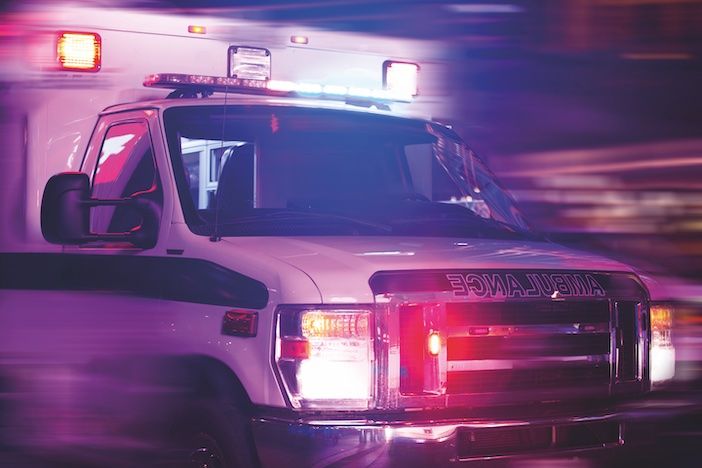
The future of lidar
Stepping back from the physical implementation of more lidar sensors and applications, Hourtienne notes effective data management will become the focus. “I think moving forward, every customer wants higher resolution and more pixels a second but then the question becomes how do you move all of that data?” he says. However, more data and the integration of AI perception will allow for innovative and new uses of lidar technology.
Whilst the majority of perception focuses on live data analysis, Hourtienne emphasizes the benefit of data analysis over time. “If much of the traffic over the past week has been to the left side of the lidar’s reach then the sensor can be moved to capture more of the scene,” he says. Optimized deployment will undoubtedly continue to improve safety in the areas where this technology is deployed.
In line with the progression of video perception software and open-source technology, Li predicts this will be a major jump forward for lidar applications. This will also be a way to reduce the associated costs with lidar deployment as some suppliers charge a licensing fee to use proprietary perception software. Li explains this fee could be a barrier to large scale government implementation if there are high associated running costs to use the technology effectively.
As lidar becomes more affordable and is used increasingly in cars, stationary sensors will be able to communicate with moving vehicles to alert drivers or autonomous cars of potential hazards on the road ahead. This kind of vehicle-to-everything (V2X) connection could enable safer implementation of smart motorways for example as lidar sensors would be able to immediately detect a broken-down vehicle and communicate with local signs to warn oncoming road users.
Read the full version of this article in the December 2023 edition of TTi magazine


